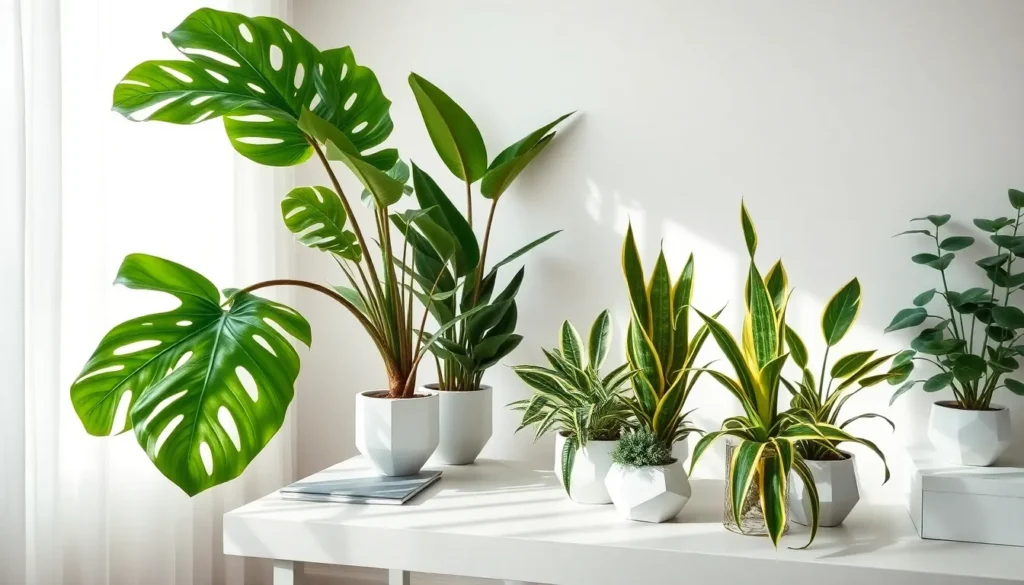In today’s fast-paced world, transforming your home office into a sanctuary of productivity and peace is more crucial than ever. Houseplants not only add a touch of natural beauty but also purify the air and improve your overall well-being, making them indispensable companions in your workspace. Whether you’re just starting your gardening journey or you’re a seasoned plant whisperer, the right selection of houseplants can breathe new life into your office, inspiring creativity and focus.
For those new to the world of indoor gardening, choosing the perfect plant might seem a bit daunting, but fear not! We’ll guide you through a selection of ten captivating houseplants that are as easy to care for as they are stunning. Seasoned gardeners, on the other hand, will find this guide a refreshing opportunity to expand their collection with some unique and vibrant options, each with its own personality and charm.
In this article, you’ll discover the secrets behind these ten striking houseplants that thrive indoors, enhancing both aesthetics and atmosphere. From resilient succulents to lush foliage plants, we’ll cover the characteristics and care tips for each, ensuring you have all the knowledge you need to cultivate a thriving indoor oasis. So, grab your gardening gloves, and let’s embark on this green adventure to transform your home office into a verdant haven of productivity and peace.
Choosing Office-Friendly Houseplants

When selecting houseplants for your office, consider those that thrive in low-light conditions and require minimal maintenance. Snake plants and ZZ plants are excellent choices, as they are hardy and can tolerate neglect.
Ensure your chosen plants can handle the typically dry air of office spaces. Using a pebble tray or a small humidifier nearby can help maintain the necessary humidity levels for your plants.
Soil selection is crucial for office plants, as it affects their growth and health. Opt for a well-draining potting mix, which prevents root rot and provides the right balance of moisture and aeration.
Watering frequency is another critical factor in office plant care. Generally, plants like pothos and peace lilies should be watered once the top inch of soil feels dry, while succulents might only need watering every couple of weeks.
Top Picks for Low Light
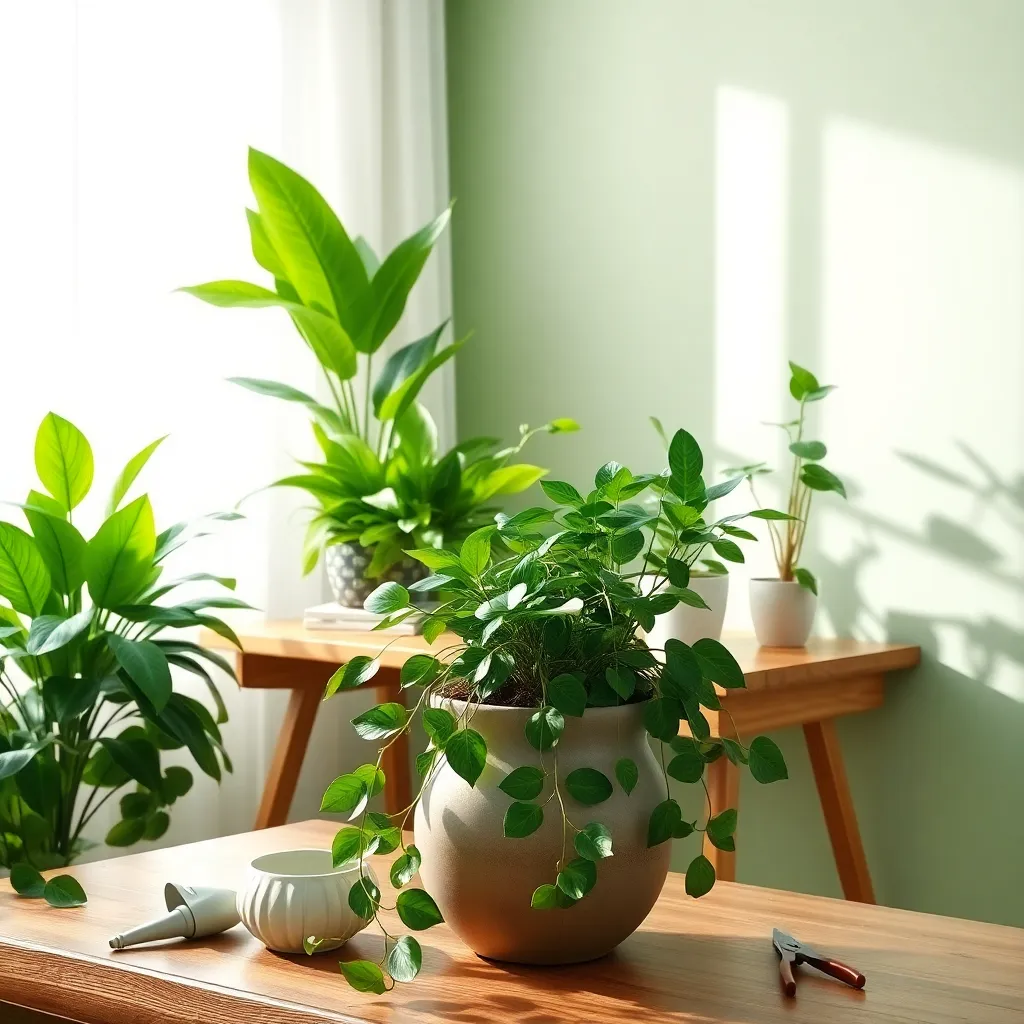
For many home offices, low light conditions can be a challenge when choosing houseplants. Luckily, there are several stunning plants that thrive in such environments, bringing life and greenery to your workspace without the need for direct sunlight.
Snake Plant (Sansevieria) is a top choice for low light areas due to its adaptability and resilience. This plant requires watering only when the soil is completely dry, making it perfect for those who might forget to water regularly.
Another excellent option is the Pothos, known for its trailing vines and heart-shaped leaves. It can tolerate low light but will grow faster with indirect light, so consider placing it near a window for optimal growth.
If you’re looking for a plant that offers both beauty and air-purifying qualities, consider the ZZ Plant (Zamioculcas zamiifolia). It thrives in low light and requires watering only every few weeks, making it ideal for busy office environments.
For those interested in a unique and low-maintenance plant, the Cast Iron Plant (Aspidistra elatior) is a solid choice. It tolerates neglect and low light exceptionally well, and thrives in well-draining potting soil.
To ensure the best results, always use a high-quality potting mix that offers good drainage for your low light plants. Additionally, monitor the humidity levels, as many low light plants prefer moderate humidity, which can be achieved with a small humidifier or by placing a tray of water near your plants.
Air-Purifying Plant Varieties
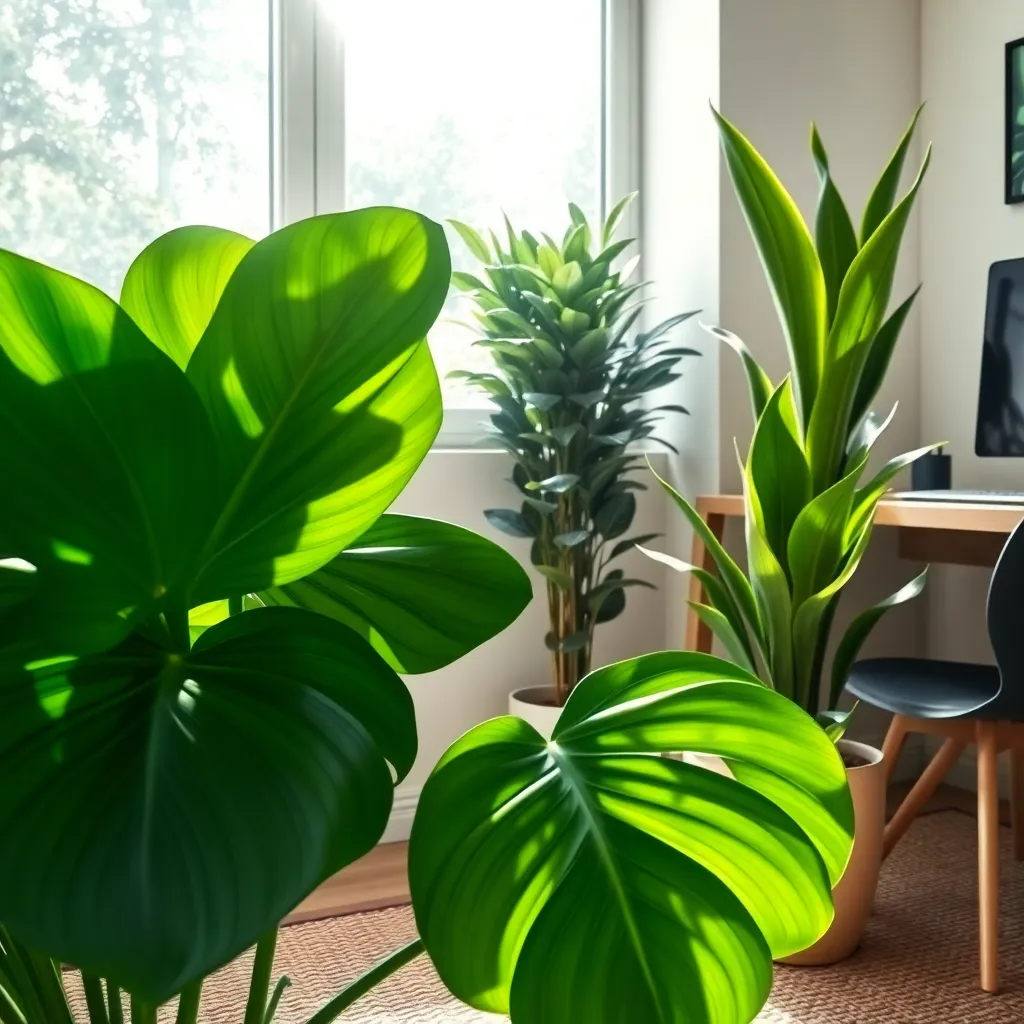
Transform your home office into a fresh oasis with air-purifying plants that boost your environment while enhancing aesthetics. Spider Plants are an excellent choice for beginners, as they’re easy to care for and thrive in a variety of conditions.
To keep your Spider Plants healthy, place them in well-draining soil and provide indirect sunlight to prevent leaf scorch. Water them moderately, allowing the soil to dry out slightly between waterings to avoid root rot.
Another top performer in air purification is the Peace Lily, known for its elegant white blooms and ability to thrive in low light. Ensure your Peace Lily’s soil remains consistently moist, and mist the leaves occasionally to maintain humidity.
For more advanced gardeners looking to expand their plant care skills, consider the Boston Fern, a lush plant known for its air-cleaning prowess. Boston Ferns require high humidity and indirect light, so place them near a humidifier or mist them regularly to keep the fronds from drying out.
Compact Options for Small Desks
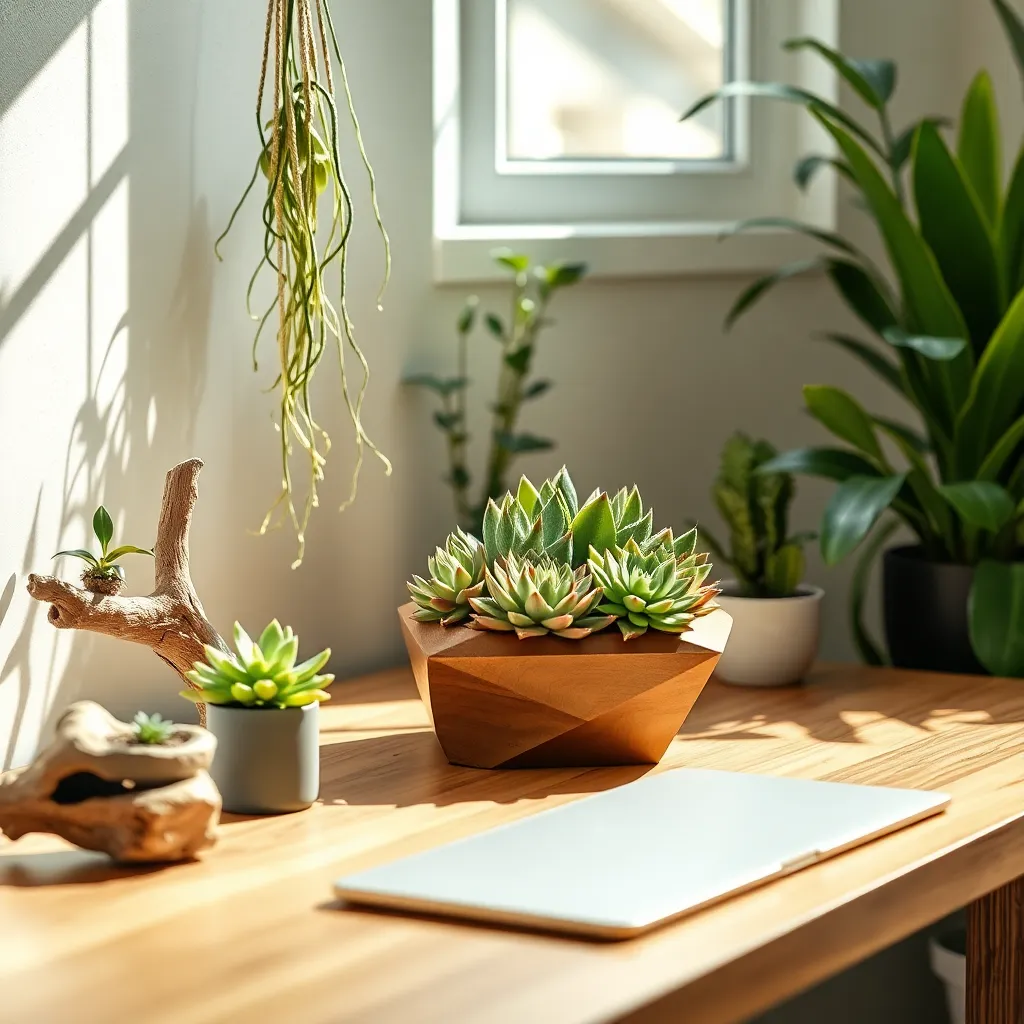
When it comes to compact options for small desks, consider the delightful Peperomia varieties. These plants are perfect for limited spaces, thriving in low to medium light and requiring minimal watering, making them ideal for busy professionals.
Another excellent choice is the Fittonia, or nerve plant, which offers vibrant foliage that can bring a splash of color to your desk. Ensure it’s kept in a warm environment with indirect light and maintain slightly moist soil for optimal growth.
For those who love succulents, the Haworthia is a resilient option that can thrive in various indoor conditions. Its low-maintenance nature requires watering only when the soil is completely dry, making it perfect for those new to plant care.
Additionally, the Pilea Peperomioides, or Chinese money plant, is a trendy choice due to its unique round leaves and minimal care requirements. Position it in bright, indirect light and water when the top inch of soil feels dry to ensure healthy growth.
Low-Maintenance Green Companions

For those seeking low-maintenance green companions, consider the resilient Snake Plant. Known for its ability to thrive in various light conditions, it only requires watering every two to three weeks, making it perfect for busy schedules.
Another great choice is the ZZ Plant, which is almost indestructible and can tolerate neglect. Ensure it is placed in well-draining soil and water it sparingly, allowing the soil to dry out completely between waterings.
Peace Lilies are not only low-maintenance but also help purify the air. They prefer indirect light and should be watered approximately once a week, with more frequent misting during dry months to maintain humidity.
When selecting low-maintenance plants, choose those that adapt well to the typical indoor environment. For advanced care, consider using a moisture meter to avoid overwatering, a common issue with houseplants. This tool can help ensure you meet each plant’s specific needs, promoting healthy growth with minimal effort.
Vibrant Plants for Visual Appeal
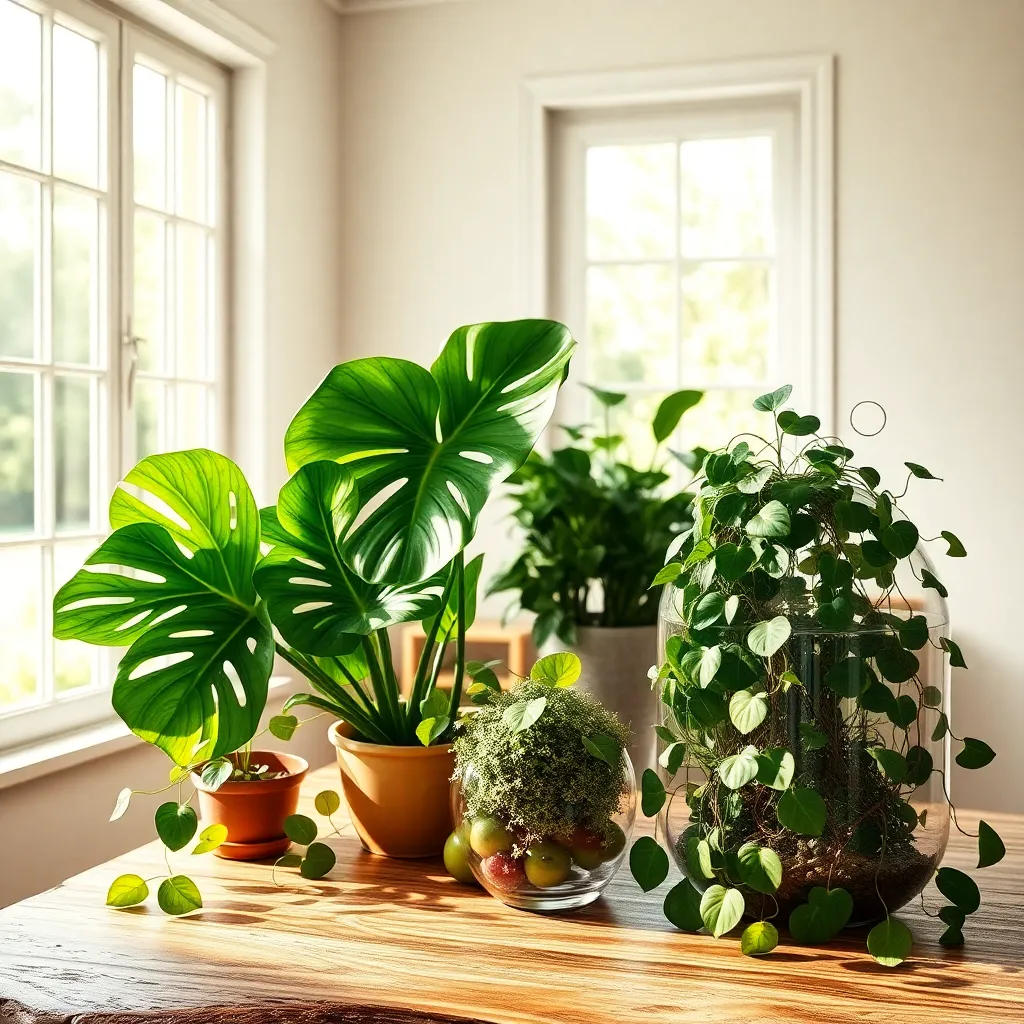
For a burst of color in your home office, consider adding vibrant houseplants that not only uplift the space but also boost your mood. The African Violet, with its stunning blooms, is a great choice, thriving in bright but indirect light.
Watering African Violets requires a gentle touch; use room-temperature water and avoid getting the leaves wet to prevent spots. They thrive in well-draining soil, so consider using a mix specifically designed for African Violets to ensure optimal growth.
Calatheas are another excellent option, known for their striking leaf patterns that add visual interest. These plants prefer medium to low indirect light and high humidity, making them ideal for a room with a humidifier or near a kitchen or bathroom.
For advanced gardeners, maintaining the humidity level for Calatheas can be achieved by placing a tray of water with pebbles beneath the plant pot. This helps keep the environment moist, mimicking their natural rainforest habitat, and ensures lush, healthy foliage.
Another vibrant choice is the Bromeliad, a tropical plant that adds a splash of color with its unique flower spikes. Bromeliads are relatively low-maintenance but require bright, indirect light and a well-draining potting mix, such as a combination of orchid bark and peat moss.
When watering Bromeliads, fill the central cup with water and replace it every two weeks to prevent stagnation. This mimics the plant’s natural watering process in the wild and keeps its roots healthy and thriving.
Boosting Productivity with Greenery
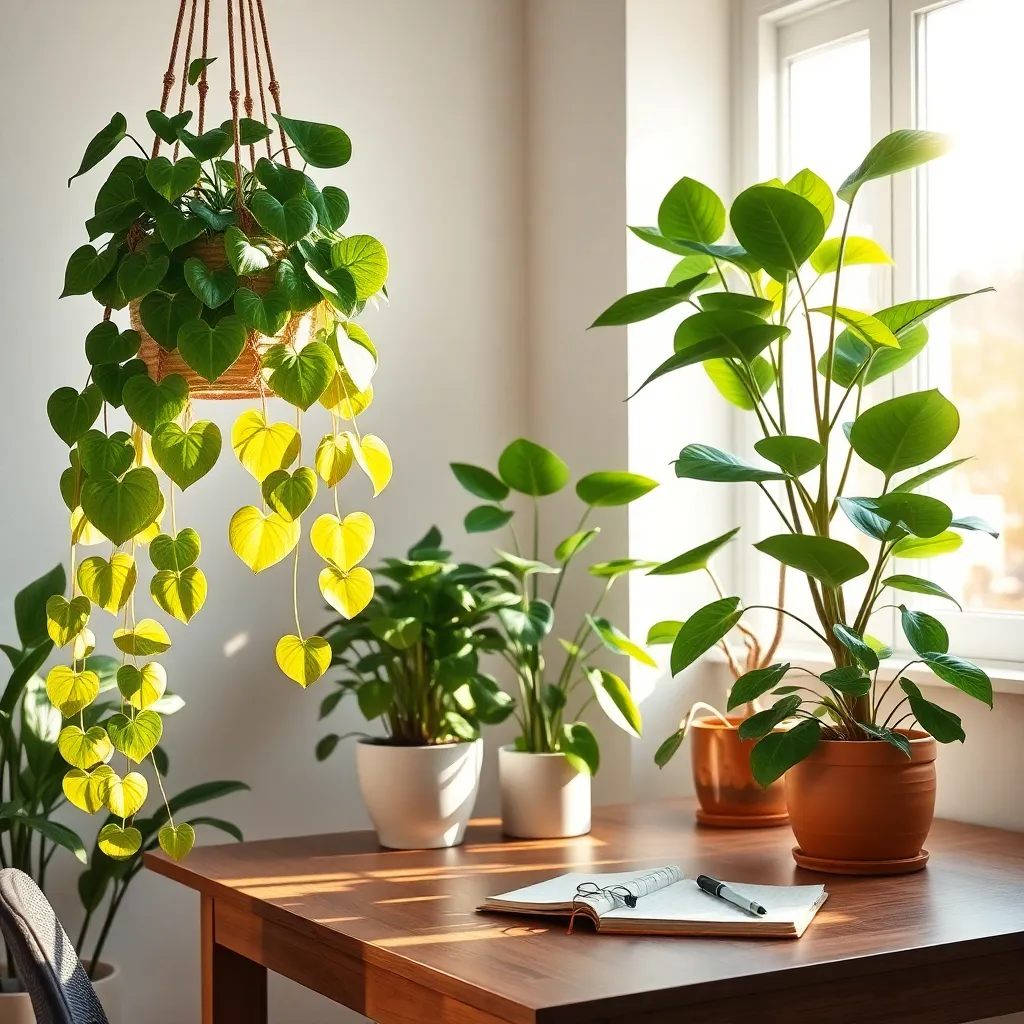
Bringing greenery into your home office can significantly enhance your productivity and focus. Studies show that having plants nearby can reduce stress levels, improve air quality, and create a more inviting workspace.
For beginners, start with low-maintenance plants like the snake plant or pothos, which thrive in a variety of light conditions. These plants require minimal care, needing only occasional watering when the soil feels dry to the touch.
Advanced gardeners might consider the fiddle leaf fig, known for its strikingly large leaves but needing more specific care. Ensure it receives bright, indirect light and water it when the top inch of soil is dry to prevent root rot.
To further boost productivity, consider grouping plants to create a mini indoor garden. This not only enhances visual appeal but can also increase humidity around your desk, benefiting both you and the plants.
Use a well-draining potting mix for most houseplants to prevent waterlogging and root issues. Tip: Incorporate perlite or coarse sand to improve drainage, especially for succulents and cacti.
- Water plants appropriately, allowing soil to dry partially between waterings.
- Ensure proper lighting—use grow lights if natural light is insufficient.
- Rotate plants weekly to ensure even growth on all sides.
Pet-Safe Plant Alternatives
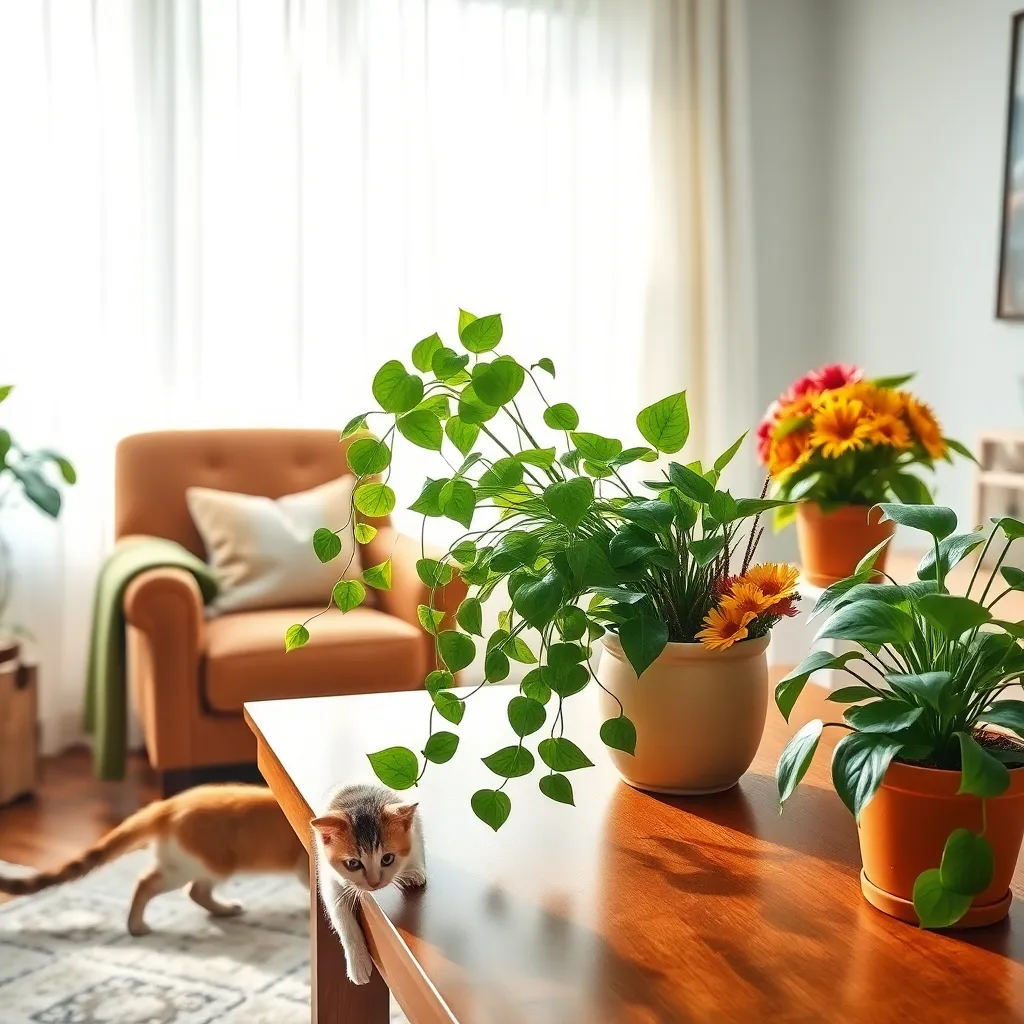
When choosing houseplants for a pet-friendly home office, it’s essential to select varieties that are non-toxic to animals. Spider plants are a fantastic option because they are not only safe for pets but also require minimal care, thriving in indirect sunlight and needing water only when the top inch of soil is dry.
Another excellent pet-safe choice is the Boston fern, known for its lush, feathery fronds. This plant prefers a humid environment, so placing it on a pebble tray filled with water can help maintain the necessary moisture levels.
For those looking for a splash of color, consider the Calathea, which boasts vibrant, patterned leaves. It thrives in low to medium light and should be watered regularly to keep the soil consistently moist but not soggy.
Peperomia varieties offer a wide range of leaf shapes and colors, making them versatile additions to any office space. These plants are low maintenance, enjoying bright, indirect light and needing water only when the soil is dry to the touch.
To ensure your pet-safe plants thrive, use a high-quality potting mix and containers with drainage holes to prevent overwatering. Regularly dust the leaves to help them absorb light more efficiently, and consider using a balanced liquid fertilizer monthly during the growing season.
Creating a Stress-Free Environment
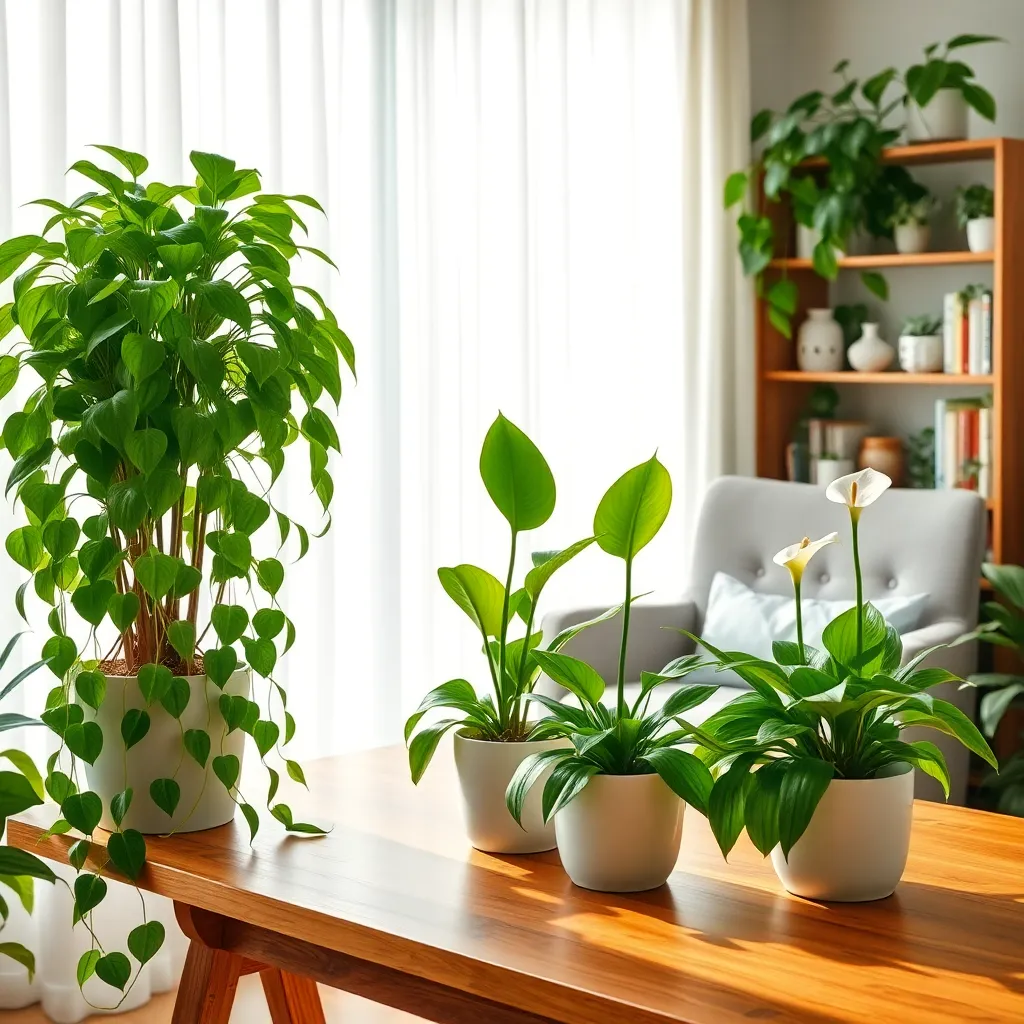
Creating a stress-free environment with houseplants involves selecting the right plants and caring for them properly. Begin by choosing plants that thrive in low-light conditions and require minimal maintenance, such as the ZZ Plant or Snake Plant.
Placement is crucial for reducing plant stress and ensuring they thrive. Position your plants away from direct drafts and in a spot where they can receive indirect sunlight for a few hours each day.
Watering practices are equally important in maintaining a stress-free environment for your plants. For most houseplants, allow the top inch of soil to dry out before watering again; this typically means watering every 1-2 weeks, depending on indoor humidity levels.
Advanced gardeners can enhance plant health by incorporating a regular fertilizing schedule. Use a balanced, water-soluble fertilizer once a month during the growing season to provide essential nutrients without overwhelming the plant.
Caring Tips for Office Plants

Office plants can transform your work environment, but they require specific care to thrive. Ensure they receive adequate light by placing them near windows or using grow lights if natural sunlight is limited.
Watering is crucial, yet often misunderstood in office settings. Most office plants prefer their soil to dry out slightly between waterings; overwatering is a common mistake that leads to root rot.
Consider the humidity levels in your office, as many plants originate from tropical environments. To increase humidity, mist your plants regularly or place a small humidifier nearby, especially in environments with dry air conditioning.
Feeding your plants with the right nutrients is essential for their health and vibrancy. Use a balanced, water-soluble fertilizer once a month during the growing season to support their growth and keep the foliage lush.
For more advanced care, assess the specific needs of your chosen plants. Research the ideal soil mix for each type; for example, succulents and cacti thrive in well-draining, sandy soil, while ferns prefer a richer, organic mix.
Regular maintenance, such as pruning and cleaning leaves, is necessary to keep your office plants healthy. Prune dead or yellowing leaves to encourage new growth, and gently wipe leaves with a damp cloth to remove dust and allow them to photosynthesize efficiently.
Lastly, be attentive to pest management, as indoor plants can sometimes attract unwanted visitors. Inspect your plants regularly for signs of pests, and consider using natural remedies like neem oil or insecticidal soap to address any infestations promptly.
Conclusion: Growing Success with These Plants
In our exploration of the “10 Stunning Houseplants for Home Offices,” we’ve delved into how each plant not only enhances your workspace aesthetically but also fortifies your relationship with your environment and those around you. We discussed the soothing presence of the Peace Lily, the resilience of the Snake Plant, the air-purifying prowess of the Spider Plant, and the mood-boosting properties of the English Ivy. Each of these plants, including the vibrant Pothos, the refreshing Aloe Vera, the elegant Orchid, the lively ZZ Plant, the calming Lavender, and the adaptable Philodendron, offers unique benefits that foster a nurturing and harmonious space conducive to productivity and positive interactions.
As your next actionable step, consider choosing one of these plants to introduce into your home office today. Watch how it not only transforms your space but also enhances your emotional and relational well-being.
Remember, a thriving environment nurtures thriving relationships. Bookmark this article as your go-to resource for cultivating a workspace that inspires connection and growth. With these green companions by your side, you’re on the path to a more harmonious and successful relationship with both your work and the people around you. Embrace this journey, and let your relationships flourish alongside your greenery.

